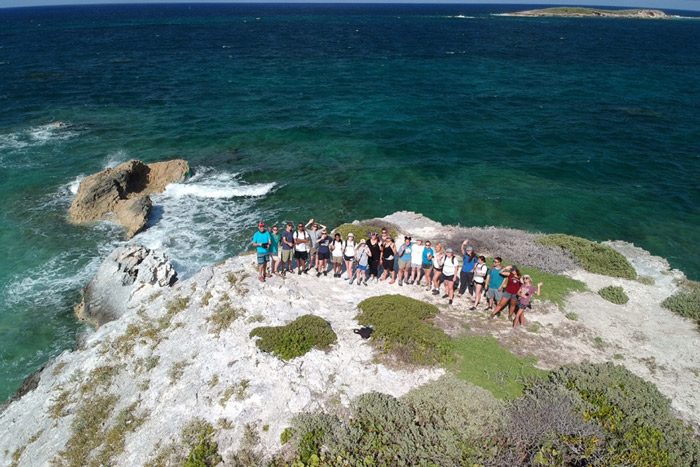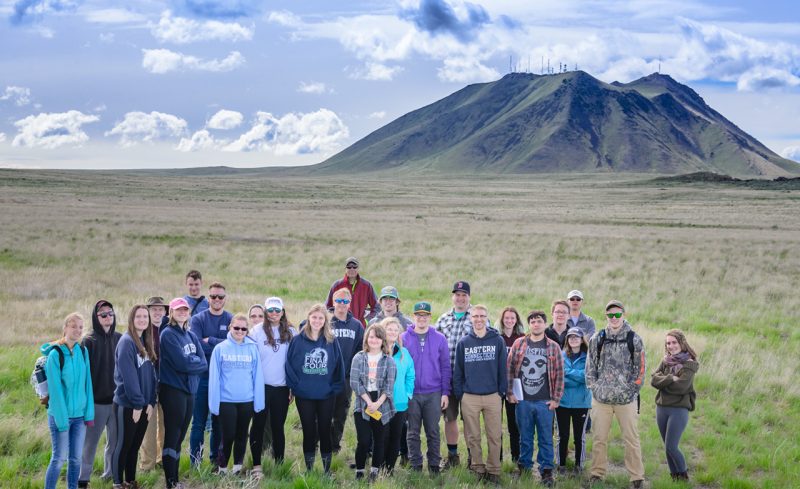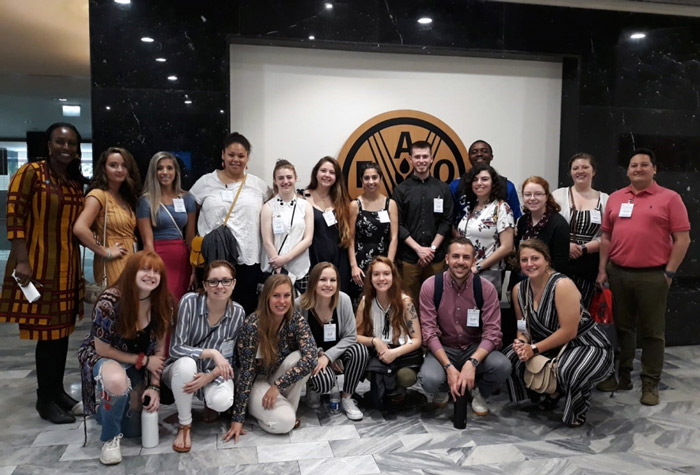- Apply
- Visit
- Request Info
- Give
Field Courses Bring Students to Bahamas, Western U.S., Italy
Written by Dwight Bachman
Published on June 06, 2019
In the weeks following Commencement, three groups of Eastern students traveled to San Salvador Island in the Bahamas, Italy, Idaho, Utah and Wyoming to engage in exciting Global Field Courses.
Tropical Biology in the Bahamas

On San Salvador Island and surrounding waters 19 students accompanied by Biology professors Kristen Epp, Brett Mattingly and Josh Idjadi, examined the ecology of marine and terrestrial organisms from May 14-25. The 10-day field experience was headquartered at Gerace Research Centre (GRC) from which students ventured daily; nightly lab sessions and discussions supplemented each day’s field observations.
Marine studies focused on coral reef, sea grass bed, mangrove, beach and rocky shore communities, while terrestrial studies examined cave, mud flat, and sand dune and upland shrub communities. On a visit to Oyster Pond, some students swam across the pond (about a half-mile) to arrive at a vent through which the water in the pond communicates tidally with the ocean. Students also visited a very large cave to see native bats and other cave-dwelling creatures including an endemic isopod.
Environmental Earth Science in the Wild West

Geology came to life in the field, as the Environmental Earth Science (EES) field course to Wyoming and Idaho from May 24-June 3 introduced 23 EES majors to concepts in geology and environmental earth science. The course included a lecture course prior to the trip that provided background knowledge and a regional geological context for the field excursion.
During the field course, students placed emphasis on group observations and discussions. At each location, faculty and students spent time collecting observations and drawing conclusions about the geological features, earth processes and environmental issues relevant to that location. In the evenings, everyone met and reviewed what we saw that day, to reinforce and expand on key concepts and learning points.
Highlights included seeing the vast geothermal features and beautiful landscapes of Yellowstone, the stunning beauty of the Grand Tetons, the bleak lava plains and diverse volcanic landforms of Craters of the Moon National Monument, and the high alpine zone of the Idaho Rockies. In addition, students saw wonderful wildlife including grizzly and black bears, moose, elk, pronghorn antelope, bighorn sheep, bald eagles and many bison, including newborn calves. A rafting excursion down the Snake River, a tram ride to 10,500 feet elevations in Jackson Hole, WY, and fossil fish collecting in the Green River Basin rounded out the trip. The excursion was a marvelous experience for students and faculty. The EES extended field course has now become an annual highlight in the EES department.
How Business is Conducted in Italy

From May 22–June 3, Professor Emiliano Villanueva, associate professor business administration, led 18 students on a trip to Rome and Perugia, Italy, or the seminar “International Business in an International Setting.” Prior to their departure for Italy, the students researched a range of topics related to business in Italy and gave 30-minute presentations to their class.
Upon their return, students submitted in-depth, 20-page reports reflecting on their experiences in Italy. Topics included the “History and Geography of Italy, “History of Rome,” “Government and Politics in Italy,; “Culture in Italy,” “GDP and the Economy of Italy,” “Business Opportunities in Italy,” “Business Rtiquette and the Italian Language” and “Rome and Vatican Sightseeing.”


